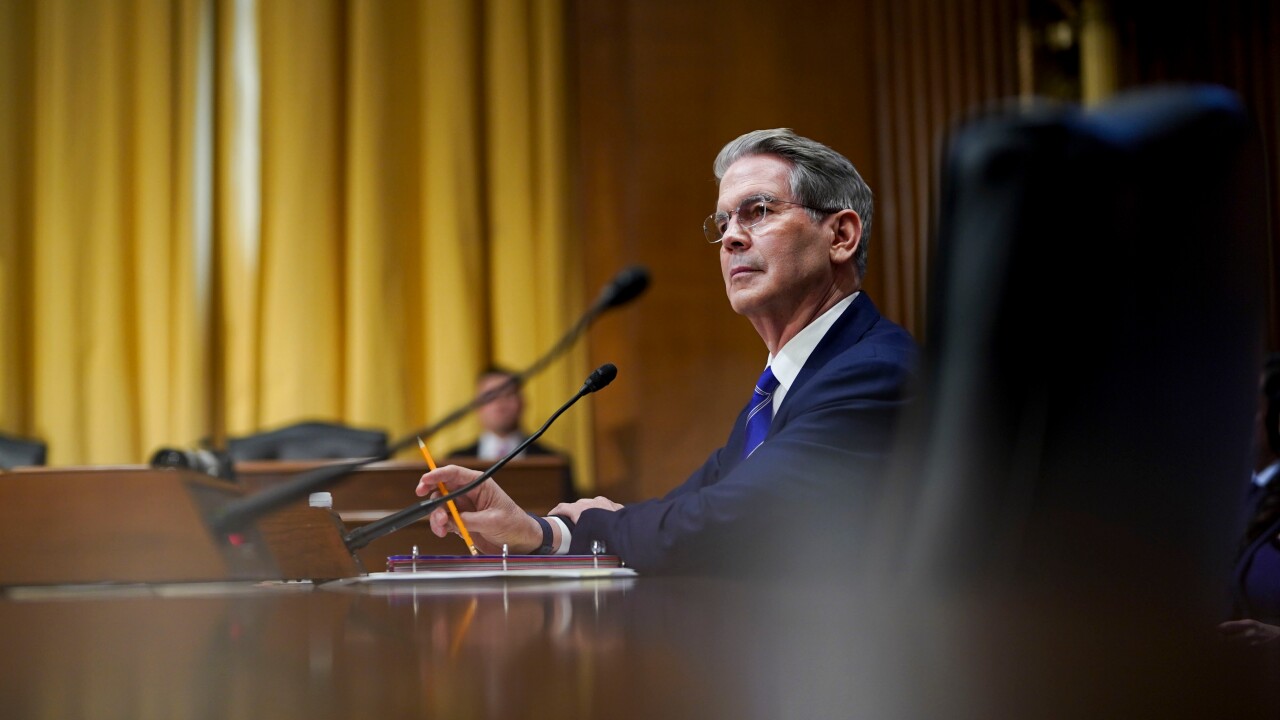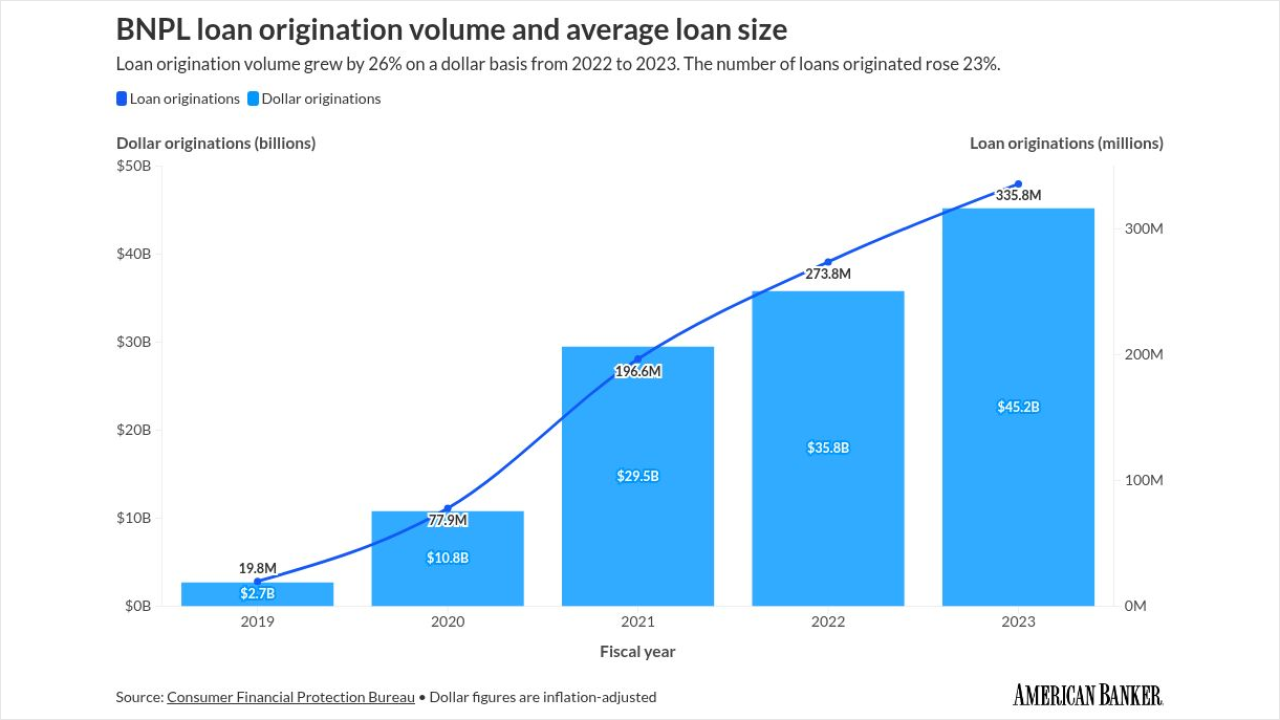WASHINGTON - Quick, name a big state-chartered thrift.
Can't? It's because there aren't many.
It wasn't always that way. Until 1980 state-chartered thrifts outnumbered those with federal charters - 2,009 to 1,984. But then the state charter began a slow, steady decline as the Office of Thrift Supervision (and its predecessor) promoted the federal charter's power to preempt state laws.
Today there are just 113 state-chartered thrifts, compared with 808 federal ones. The five largest federal thrifts hold 42% of the industry's $1.09 trillion of assets, and the OTS' budget is so dependent on these institutions' retaining their federal charters that critics claim the agency cannot afford to tick them off, leading to passive supervision.
Is preemption's next victim the state banking charter? Will the Office of the Comptroller of the Currency soon find itself captive to a handful of large national banks?
That's the scenario being outlined by a loud and growing set of critics who condemn the OCC's latest moves to preempt state laws.
"There is no doubt that if this does not change, I don't think there will be a single, large multistate bank operating under a state charter," Arthur E. Wilmarth Jr., a law professor at George Washington University, testified April 7 as the Senate Banking Committee probed the effect of the OCC's moves.
"If the federal rules stand, within the next several years you will rapidly see what happened in the thrift industry - the state charters will dwindle to almost nothing," Prof. Wilmarth said in a follow-up interview. "The national banks may not realize what they are setting themselves up for. They will have nowhere to go if they don't like what that regulator is doing."
The demise of the dual banking system has been predicted before, most recently in the mid-1990s, when Congress swept away state barriers to interstate banking.
But over the last five years more banks have actually dropped their national charters in favor of state charters than vice versa. According to the Federal Deposit Insurance Corp., 125 national banks with $97 billion of assets have converted to state charters, while 70 state banks with $78 billion of assets have adopted national charters.
Five-year trends at national and state banks move in the same direction - there are fewer companies, which are larger and more profitable. Yet the magnitude of the trends add interesting detail.
While there are 18.6% fewer national banks, or 2,001, than there were in 1998, the ranks of state banks have shrunk only 8.7%, to 5,768 companies. Assets held by national banks soared 35% over that period, to $4.3 trillion, but state bank assets increased even more - 46.5%, to $3.31 trillion.
Annual net income at national banks ballooned 67%, to $63 billion, but state banks were not far behind, with a 64% jump, to $39.6 billion.
In an interview, Comptroller of the Currency John D. Hawke Jr. defended his agency's moves to preserve a single set of rules governing national banks - and dismissed as "nonsense" the idea that preemption could destroy the dual banking system.
"Preemption has been around for 140 years in the national banking system, and there has been tremendous equilibrium in the system," Mr. Hawke said.
In fact, if either side has an advantage, he says it is the states. State-chartered banks do not have to pay for exams done by the Federal Reserve and the FDIC, which share with state banking departments the responsibility for ensuring the safe and sound operation of state banks.
"State banks get about $1 billion a year in federal subsidies that national banks don't get," Mr. Hawke said. "If Diana is really concerned about the dual banking system, she ought to work with us to equalize the playing field on the fees banks have to pay for supervision."
"Diana" is Diana Taylor, New York's banking superintendent and one of Mr. Hawke's most determined detractors.
"The idea that suddenly the sky is falling, and Diana Taylor is playing Chicken Little, is really nonsense," Mr. Hawke said. "There is no evidence that the equilibrium in the dual banking system is going to be affected by anything we did."
(The OCC in January put the crowning touch on years of rules delineating its authority to preempt state and local moves to curb national bank operations.)
Still, there is no denying the national charter has attracted a majority of the industry's assets, and some observers say consolidation - not preemption - will doom the dual banking system.
Of the 50 largest banks, 26 hold national charters. Seven of the top 10 use national charters, and that number will soon jump to eight when HSBC Bank USA converts from a New York state charter.
That will leave only J.P. Morgan Chase Bank and SunTrust Bank.
JPMorgan Chase is moving its non-New York deposits to a federal thrift charter and refuses to say what it will do with its New York state charter once its acquisition of Bank One Corp., which uses a national charter, is completed. But outsiders predict JPMorgan Chase will bleed assets from its state charter and finally flip to a national charter in 2006, when Bank One's leader, James Dimon, takes the helm.
That leaves SunTrust as the only top 10 state charter not in doubt. Executives of the Atlanta bank did not want to be interviewed for this story, but a spokesman said it has no intention of abandoning its Georgia state charter. "The charter we have works for us, and we don't have any plans to change it."
While experts agree that banks have switched into and out of the national charter for years, few envision any of the largest banks surrendering their federal charter. It simply offers too much convenience for companies operating in large chunks of the country.
Beyond the top 10, there are more question marks and defections. Take Regions Bank, which has an Alabama state charter and is combining with the nationally chartered Union Planters Bank. A Regions Financial Corp. spokeswoman said the decision of which charter to use is one of many merger questions still to be worked out.
Colonial Bank in Montgomery, Ala., quietly switched to a national charter in August. On Monday, a bank spokesman said its president, Flake Oakley, did not want to explain why the unit of Colonial BancGroup Inc., a $16.2 billion-asset holding company operating in six states, made the move.
And while the split among the top 50 is relatively even, the asset count is lopsided. The national banks among the top 50 hold 74% of the $6.8 trillion of total assets.
"The major force weakening the dual banking system is the ongoing consolidation of the industry," said Kenneth A. Guenther, a consultant to the Independent Community Bankers of America.
John W. Ryan, the executive vice president of the Conference of State Bank Supervisors, blames preemption, but he agreed consolidation is a factor.
Take, for example, the possibiilty that large national banks buy half of the state-chartered top 50 banks. "Think about what that means in terms of the concentration of power and risk in one regulator. There are more and more assets in fewer and fewer institutions. If you look at the OCC, it takes action against the little guys." The major national banks have become "too big to criticize."
What are the dangers of entrusting oversight of so much of the industry's assets to one agency?
Ms. Taylor has a long list. For starters, she argues that the skills needed by state regulators to supervise large, complex banks will atrophy and that over time the states will lose the ability to police the biggest banks.
"State supervisors' ability to oversee the large complicated institutions could deteriorate," she said in a speech March 25. "The fate of these very important institutions would then be left in the hands of an individual where literally an act of Congress is required to change something he does, as we have found out. The chair of the OCC has a huge amount of power, with very little oversight."
She called on Congress to block the OCC rules "before a wave of bank charter flips seriously wounds or destroys the dual banking system."
(Sen. John Edwards, D-N.C., and Rep. Barney Frank, D-Mass., are pushing resolutions that would overturn the OCC's rules. But the lawmakers are working on tight deadlines: the House has until mid-May to act, while the Senate has until June.)
Ms. Taylor also warned her audience of bankers that future comptrollers might not be as accommodating as Mr. Hawke.
Prof. Wilmarth, who is a paid consultant for CSBS, the national association of state banking commissioners, made the same point in his Senate testimony: "I think the large banks may well regret what they are now pursuing … when they get a regulator from which there is no exit, no option."
The OCC is already captive to its largest customers, he said in an interview. "I can't find a single tough enforcement action taken against a large national bank."
Robert Garsson, an OCC spokesman, denied it is hesitant to take action.
"We take consumer protection very seriously, regardless of the size of the bank," he said Monday. "We will take aggressive enforcement actions if we need to."
That often is not necessary, because when the OCC passes complaints along to national banks, they "take very quick steps to fix things," Mr. Garsson said.
Beyond the state regulators, Prof. Wilmarth also questioned whether the Fed and the FDIC will be able to retain their bank supervision roles.
"At some point it is going to be hard for the FDIC and the Fed to say, 'We should have significant supervisory roles' if all the banks hold national charters," he said. "The balance of regulatory power has followed the balance of chartering power."
Prof. Wilmarth also said when it comes to supervisors, more is better. He pointed to the securities business, where state authorities uncovered conflicts of interest and preferential treatment for lucrative customers.
"The mutual fund scandals are object lessons - all those scandals were exposed by state regulators. The states had their own incentives and authority to go after abuses and protect their consumers," he said. The Securities and Exchange Commission - "maybe they were just stretched too thin."
Neil Milner, the president of the Conference of State Bank Supervisors, agrees with Mr. Hawke that the popularity of both state and national charters ebbs and flows over time. But he also says the OCC has overreached, broadening its preemption authority too much.
National standards are fine, but state regulators should still get to enforce them, he said. National bank subsidiaries should still be required to get state licenses, and state regulators should still have access to companies operating in their jurisdictions.
"We need to keep the options open so that even the biggest institutions have reasons to have either charter," Mr. Milner said. "Neither charter should be the charter of choice for all institutions."








